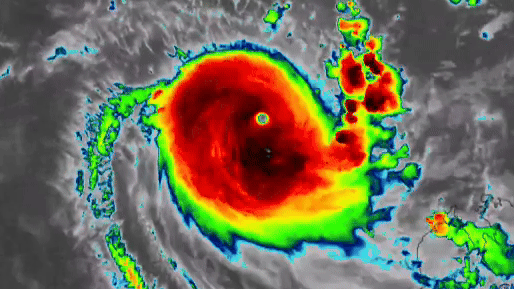California’s Environmental Activism and Its Unintended Consequences
California, often hailed as a beacon of environmental activism, has become a paradox of good intentions leading to disaster. While the state has made significant strides in environmental policy, the unintended consequences of these well-meaning efforts have, at times, spiraled into devastating wildfires. This article explores the complexities of California’s environmental activism, emphasizing the need for a balanced approach to policy-making that considers both ecological and human factors.
The Roots of Environmental Activism in California
California’s environmental movement dates back to the 1960s and 1970s, driven by a growing awareness of pollution, habitat destruction, and the need for conservation. Early activists, inspired by the counterculture movement, rallied around issues such as air quality, water conservation, and the preservation of natural landscapes. Iconic moments, like the first Earth Day in 1970, sparked a wave of legislation aimed at protecting the environment.
Over the decades, California has implemented a series of ambitious policies, including the California Environmental Quality Act (CEQA), the establishment of protected areas like national parks and wildlife refuges, and aggressive legislation targeting greenhouse gas emissions. These initiatives have positioned California as a global leader in environmental stewardship. However, the very policies designed to protect the environment have sometimes led to unintended consequences.
Good Intentions: The Push for Fire Prevention
One of the major focuses of California’s environmental activism has been wildfire prevention. The state has long struggled with devastating wildfires, exacerbated by climate change, drought, and a growing population encroaching on wildfire-prone areas. In response, numerous initiatives have been launched to reduce fire risks, including stricter regulations on land use and forest management.
These regulations often emphasize protecting certain species and ecosystems, leading to a reduction in traditional land management practices such as controlled burns and forest thinning. While these practices were historically used by Indigenous peoples and forest managers to maintain healthy ecosystems, modern environmental policies frequently conflict with these methods. The consequences of this have become increasingly apparent.
The Rise of Catastrophic Wildfires
The results of these well-meaning but misguided policies have been catastrophic. The 2020 wildfire season was one of the worst in California’s history, with over 4 million acres burned and thousands of homes destroyed. Many experts argue that the restrictions imposed on fire management contributed to the accumulation of dead vegetation and underbrush, acting as fuel for wildfires that might have been mitigated through proactive management.
In the face of these disasters, some environmentalists have begun to reassess their positions. The recognition that traditional ecological knowledge, including the use of fire as a land management tool, can be crucial in preventing wildfires has started to gain traction. However, this shift is slow and faces resistance from those who prioritize species protection over fire management.
Balancing Environmental Goals with Practical Solutions
To address the challenges posed by California’s environmental activism, a balanced approach is necessary. Policymakers must consider not only the ecological implications of their decisions but also the human and economic impacts. Here are some potential strategies to achieve this balance:
- Promote Controlled Burns: Integrating controlled burns into forest management practices can help reduce the fuel load in fire-prone areas, making wildfires less catastrophic.
- Enhance Community Resilience: Developing community preparedness programs can empower residents in wildfire-prone areas to take proactive measures to protect their homes and families.
- Incorporate Indigenous Practices: Learning from Indigenous land management techniques can provide valuable insights into sustainable practices that respect both the environment and the cultural heritage of Native peoples.
- Encourage Thinning Projects: Thinning overgrown forests can enhance biodiversity and improve forest health while reducing the risk of large-scale wildfires.
The Role of Technology in Mitigating Wildfire Risks
Advancements in technology offer additional tools for managing wildfire risks. Remote sensing, aerial surveillance, and predictive modeling can help identify fire-prone areas and monitor vegetation health. Furthermore, the use of drones in firefighting operations allows for quick assessment and response to emerging fires, potentially saving lives and property.
Moreover, public awareness campaigns utilizing social media and mobile applications can keep communities informed about fire risks and safety measures. By harnessing technology, California can improve its response to wildfires while also promoting sustainable practices in land management.
Lessons Learned and the Path Forward
California’s experience with environmental activism serves as a cautionary tale about the complexities of policy-making. While the intentions behind these efforts are commendable, the consequences can sometimes be dire. As the state grapples with the realities of climate change and ecological degradation, it must adopt a more nuanced approach that prioritizes collaboration among stakeholders, including environmentalists, scientists, policymakers, and local communities.
In summary, California’s journey through environmental activism highlights the need for an integrated approach to ecological management. By acknowledging the interconnectedness of human and environmental systems and being open to adapting policies based on real-world outcomes, California can continue to lead in environmental stewardship while reducing the risks of disasters like wildfires. The path forward requires a willingness to learn from past mistakes and to embrace innovative solutions that respect both nature and the people who live within it.
Conclusion
California’s environmental activism is a testament to the power of collective action and the desire for a sustainable future. However, as the state faces the consequences of its policies, it must remain vigilant and adaptable. By recognizing the complexities of environmental issues and striving for a balanced approach, California can turn its good intentions into effective action, ensuring a safer, more sustainable environment for generations to come.
See more Your Daily Weather



